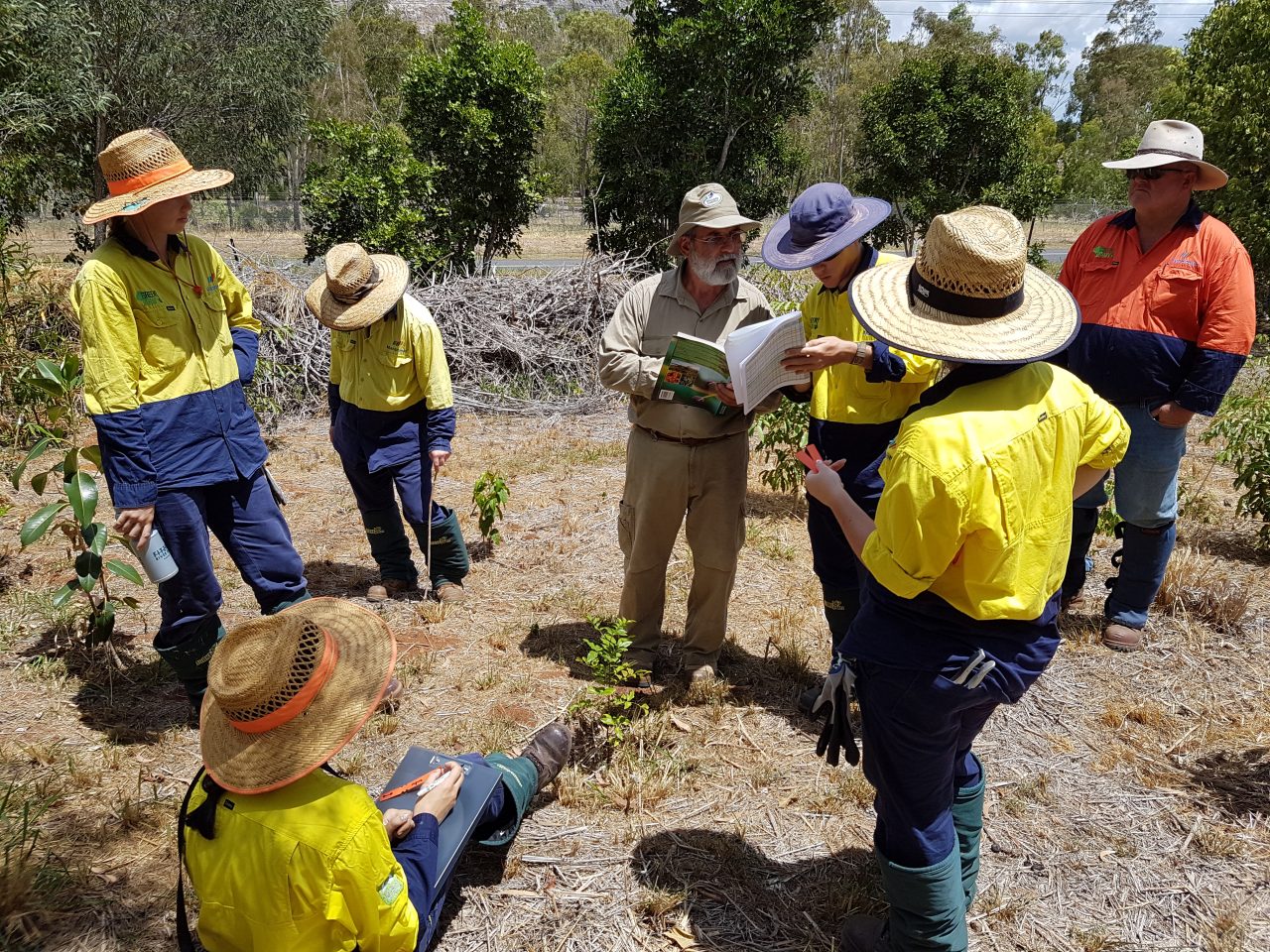
After the flames – Aussie landscape and volunteers prove their resilience
Posted on February 24th, 2020
Located in central Queensland, Australia, Mount Etna Caves National Park (Mt Etna) is a special place – home to threatened plants and animals and cared for by a group of passionate volunteers.
Semi-evergreen vine thicket (SEVT) is an endangered ecosystem. The SEVT at Mt Etna National Park creates an important habitat for an endangered bat species and an endangered fern. To improve the condition and extent of SEVT for the threatened species the site received federal and state Government funding to plant 13,000 trees over three years under the 20 Million Trees program.
Natural Resource Management group Fitzroy Basin Association (FBA) lead the project and quickly sourced the local authority on native trees (and how to successfully plant them), Steve Elson.
The next three years saw Steve become entrenched in the revegetation program:
- deciding what native trees should be planted and in what quantity
- helping to collect 5,000 seeds and cuttings from existing Mt Etna vegetation and surrounding areas
- overseeing the propagation of seedlings
- developing a procedure for how each plant should be planted
- instructing other volunteers on how to plant the native tree species

Steve collecting seeds 
Steve inducting workers to the revegetation site 
Revegetation site post planting
Finally, when the excitement was over and 13,000 trees were planted, Steve and five other volunteers took it upon themselves to visit the site weekly to weed and water – calling themselves OGREs (Old Guys Restoring Ecosystems).

Back L to R – Cheryl Greene, Noel Sands, BethleaBell, Joesph Stapleton
Front L to R – Steve Elson, John McCabe, Bob Newby, Ed Harbas
In November 2018, two years after the project finished, a catastrophic fire raged through Mount Etna National Park. The disaster was the largest wildfire that the park has ever seen. Over a million trees (some over 100 years old) were burnt down including all 13,000 trees in the revegetation zone. For the first time, the fire was hot enough to burn the naturally fire-resistant SEVT but not all of it. While damaged, the SEVT stopped the fire before it reached a rural township of 700.
An initial survey concluded that all newly planted revegetation was lost but Steve and the OGREs knew better. Visiting the site a month later, the OGREs found bright green shoots emerging from the blackened earth. Due to the expert advice given by Steve, and the hard work put in by the OGREs, 50% of the revegetation site survived the fire – buried deep enough to reshoot and start growing again.

Now, a year after the fire and after countless hours of weeding and watering the revegetation site is back to were it was just before November 2018, but the work is not over.
“It’s going to be another four years until the vine thicket is established enough to overcome the dry weather and unrelenting weeds”, Steve advises. Investing their own time and borrowing resources the OGRES continue to invest half a day every week into the site.
“We’ve put too much into the site, we can’t let it go backwards now” Steve reiterates.











